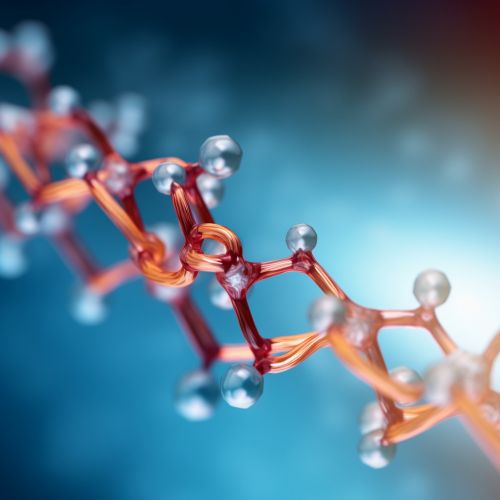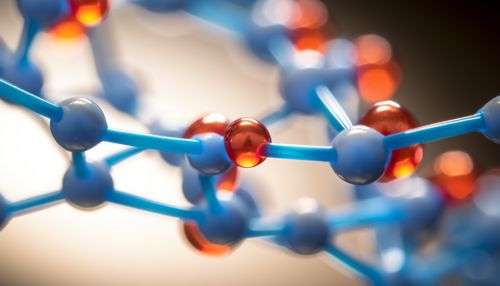Ribonucleic acid
Overview
Ribonucleic acid (RNA) is a polymer composed of nucleotides, which are in turn composed of a nitrogenous base, a five-carbon sugar (ribose), and at least one phosphate group. RNA is one of the three major biological macromolecules that are essential for all known forms of life (along with DNA and proteins). A central tenet of molecular biology states that the flow of genetic information in a cell is from DNA through RNA to proteins: “DNA makes RNA makes protein”.
Structure
RNA molecules are typically single-stranded and are made of smaller molecules called nucleotides that are linked together in a chain. Each nucleotide in an RNA molecule consists of a nitrogenous base, a ribose sugar, and a phosphate. The sequence of nucleotides allows RNA to encode genetic information.


Types of RNA
There are several types of RNA, each with a unique function.
Messenger RNA
Messenger RNA (mRNA) carries the genetic information copied from DNA in the form of a series of three-base code “words,” each of which specifies a particular amino acid.
Transfer RNA
Transfer RNA (tRNA) is the key to deciphering the codons in mRNA. Each type of amino acid has its own type of tRNA, which binds it and carries it to the growing end of a polypeptide chain if the next code word on mRNA calls for it.
Ribosomal RNA
Ribosomal RNA (rRNA) associates with a set of proteins to form ribosomes. These complex structures, which physically move along an mRNA molecule, catalyze the assembly of amino acids into protein chains. They also bind tRNAs and various accessory molecules necessary for protein synthesis.
Other types of RNA
There are many other types of RNA, including small nuclear RNA (snRNA), microRNA (miRNA), small interfering RNA (siRNA), and Piwi-interacting RNA (piRNA), among others. These other types of RNA are involved in various cellular functions, including the regulation of gene expression, the regulation of protein synthesis, and the maintenance of cellular structures.
Functions
RNA plays a central role in the pathway from DNA to proteins, known as the "Central Dogma of Molecular Biology". This process includes two steps: transcription and translation.
Transcription
During transcription, a DNA sequence is read by an RNA polymerase, which produces a complementary, antiparallel RNA strand. As opposed to DNA replication, transcription results in an RNA complement that includes uracil (U) in all instances where the DNA molecule includes thymine (T).
Translation
During translation, the mRNA produced in transcription is read by the ribosome to produce a specific amino acid chain, or polypeptide, that will later fold into an active protein.
Role in Diseases
Alterations in the RNA sequences could lead to various disorders. For example, some viral diseases, like HIV and influenza, are caused by viruses with an RNA genome. Additionally, mutations in the RNA sequence can lead to diseases like cancer.
